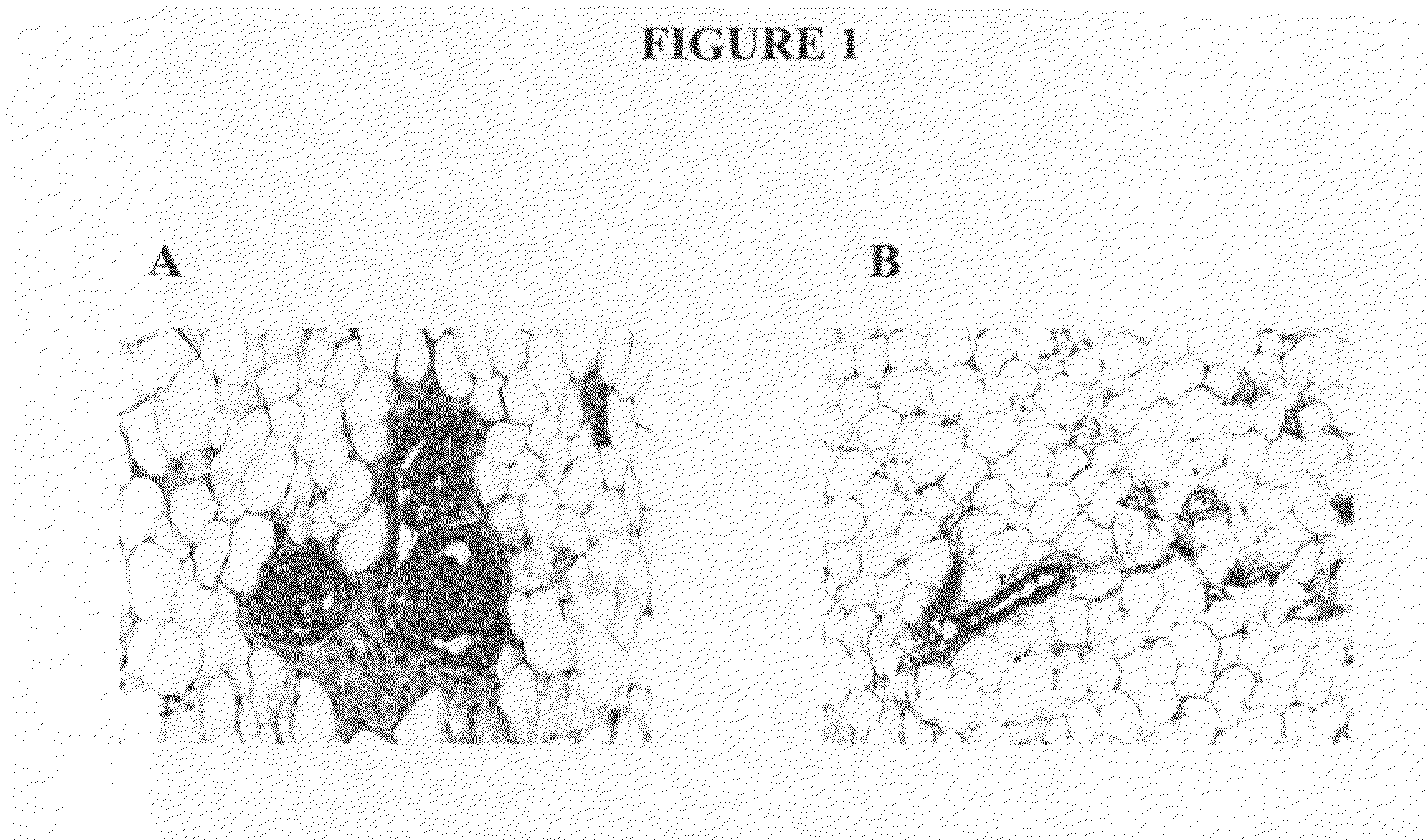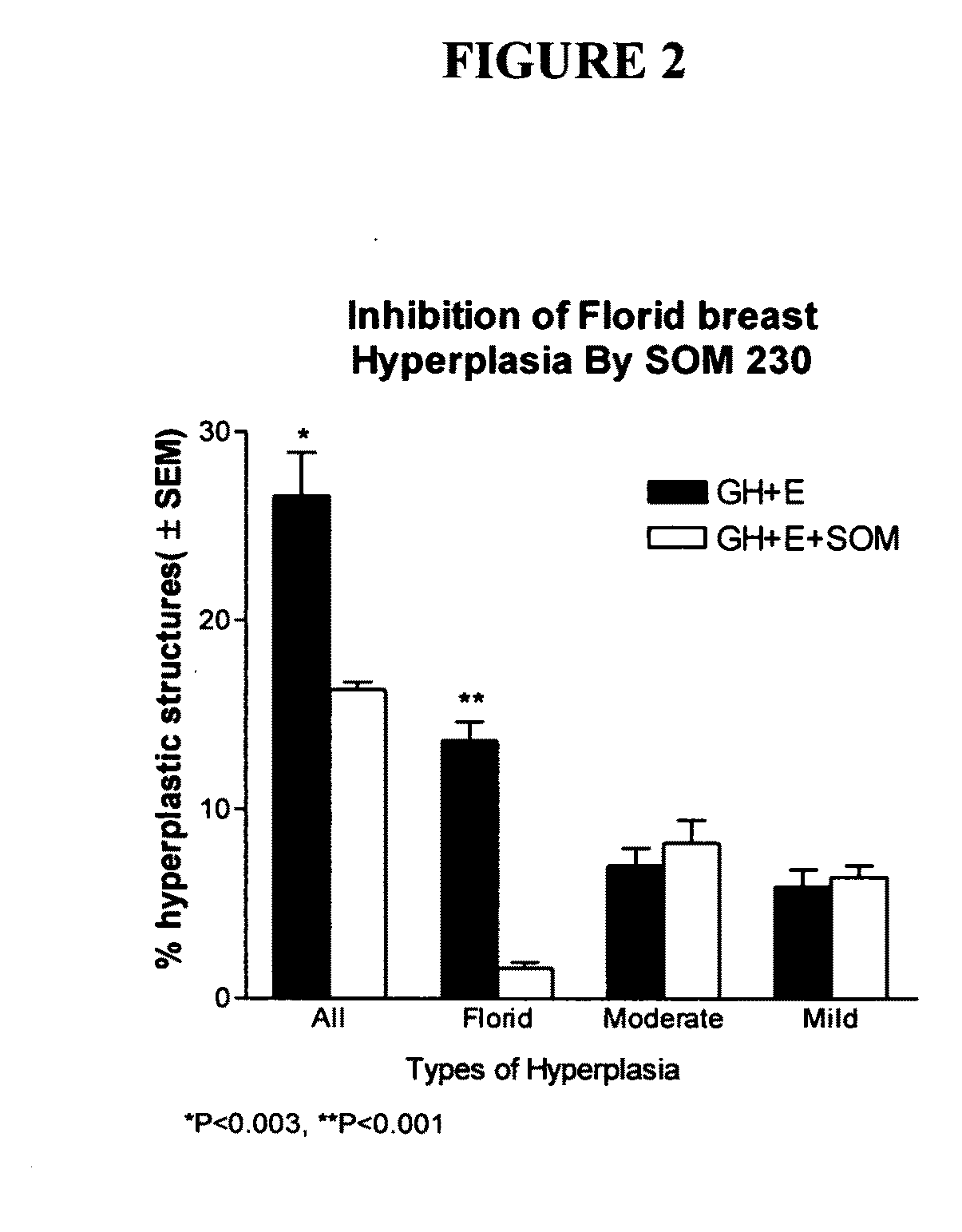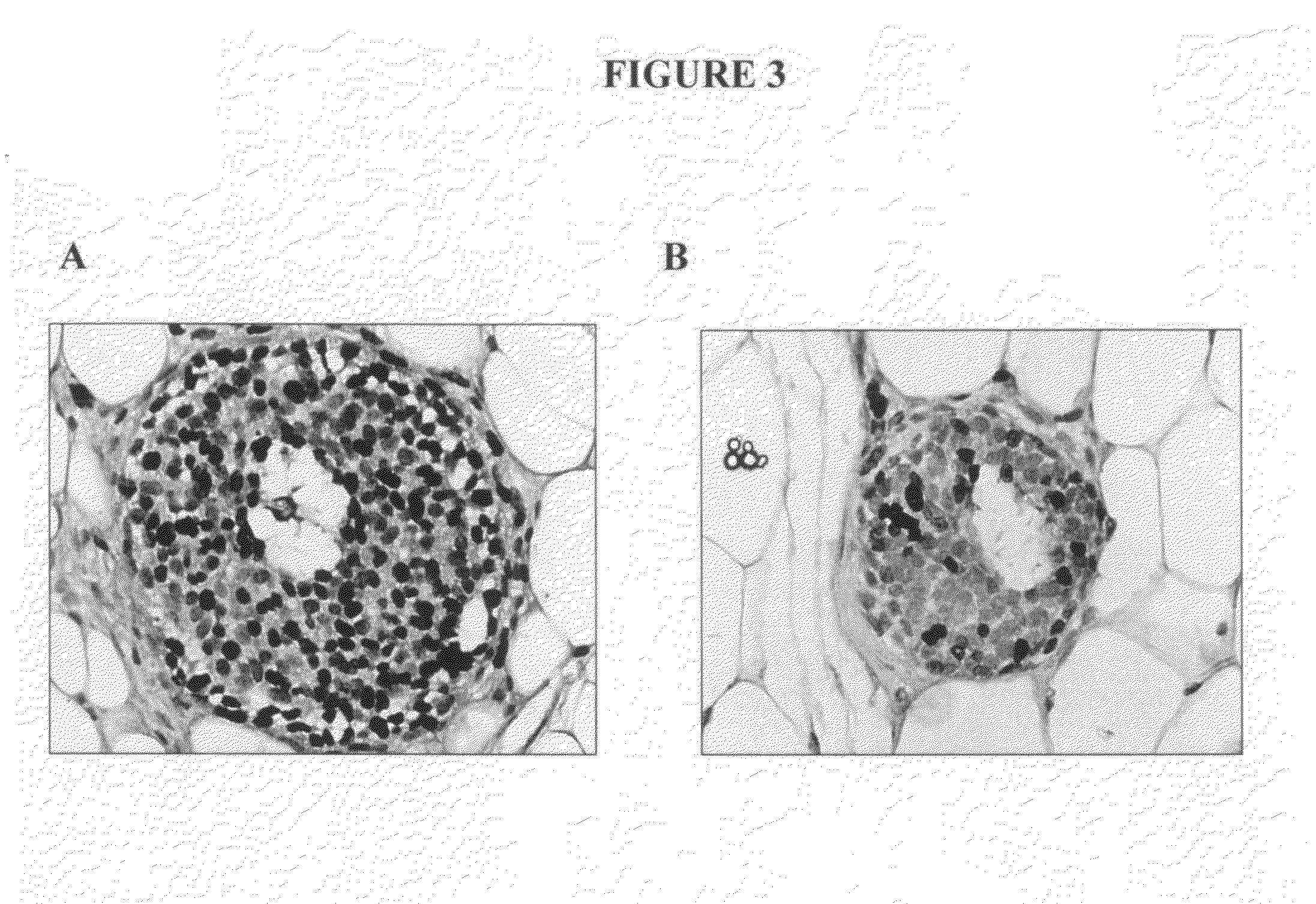Somatostatin analogs and IGF-I inhibition for breast cancer prevention
a technology of somatostatin and breast cancer, applied in the field of somatostatin analogs and igfi inhibition for breast cancer prevention, can solve the problems of tamoxifen treatment, high risk of breast cancer for women with certain hyperplastic lesions of the breast, and almost complete estrogen deficiency of women, so as to reduce cell division, inhibit both teb number and % gland area, and increase apoptosis in hgh+e2
- Summary
- Abstract
- Description
- Claims
- Application Information
AI Technical Summary
Benefits of technology
Problems solved by technology
Method used
Image
Examples
example 1
[0122]We previously noted that a somatostatin analog called SOM230 inhibited insulin-like growth factor-1 action in mammary gland development (Ruan, W et al (2006) Mol Endocrinology 20(2):426-436). Not only did it work by its known activity by inhibiting growth hormone production from the pituitary gland but it was also found to have an independent IGF-I inhibitory effect on the mammary gland itself, via a pituitary independent mechanism. The reason this is important is that IGF-I is essential in order for estrogen and progesterone to work on the mammary gland (Ruan W et al (1995) Endocrinology 146(3):1170-1178). Therefore we reasoned that if we could show that IGF-I inhibition is as or more effective than antiestrogens (eg Tamoxifen) in preventing hyperplasia and eventual breast cancer development, this would provide a valid and improved approach to breast cancer prevention and treatment.
[0123]To test whether SOM230, a drug that inhibits IGF-I action on the breast, was effective, w...
example 2
[0128]We also examined samples of normal human breast tissue and of atypical ductal hyperplasia and DCIS for presence or absence of the various somatostatin subtype receptors by immunohistochemistry. To determine whether one or more somatostatin subtype receptors was present in human breast tissue, we immuno-stained 5 separate samples each of Atypical Ductal Hyperplasia (ADH) (FIG. 7, middle panel) and Ductal Carcinoma in situ (DCIS) (FIG. 7, right panel) for the presence or absence of SSTR subtype receptors 1-5. Antibodies were generously provided by Dr. Diego Ferone, Genoa, Italy. For positive controls we used human pancreatic islet cell tissue (FIG. 7, left panel). The most intense staining in both ADH and DCIS was noted for SSTR3 and SSTR5. There was staining in cytoplasm and cell membranes.
example 3
Evidence that SOM230 can Prevent Experimental Mammary Hyperplasia by Blocking IGF-I and Thus Estrogen Action in the Mammary Gland: Preliminary Evidence for an Effect in Humans
[0129]Background: Antiestrogens or aromatase inhibitors are used for breast cancer chemoprevention. These treatments cause unpleasant side effects including hot flashes and vaginal dryness. We have previously shown that IGF-I is required to permit estrogen and progesterone action in the mammary gland. Furthermore, a novel somatostatin analog called SOM230 was found to prevent estrogen action by reducing pituitary growth hormone, but also by a direct IGF-I action inhibitory effect on the mammary gland. Menopausal symptoms would not likely to occur with SOM230 since estrogen is not lowered. Material and Methods: We have approached this issue in several ways. 1) We developed a model of hyperplasia in hypophysectomized and oophorectomized female rats. Hyperplasia was induced by treatment with 600 mcg hGH and follic...
PUM
| Property | Measurement | Unit |
|---|---|---|
| Volume | aaaaa | aaaaa |
| Volume | aaaaa | aaaaa |
| Volume | aaaaa | aaaaa |
Abstract
Description
Claims
Application Information
 Login to View More
Login to View More - R&D
- Intellectual Property
- Life Sciences
- Materials
- Tech Scout
- Unparalleled Data Quality
- Higher Quality Content
- 60% Fewer Hallucinations
Browse by: Latest US Patents, China's latest patents, Technical Efficacy Thesaurus, Application Domain, Technology Topic, Popular Technical Reports.
© 2025 PatSnap. All rights reserved.Legal|Privacy policy|Modern Slavery Act Transparency Statement|Sitemap|About US| Contact US: help@patsnap.com



